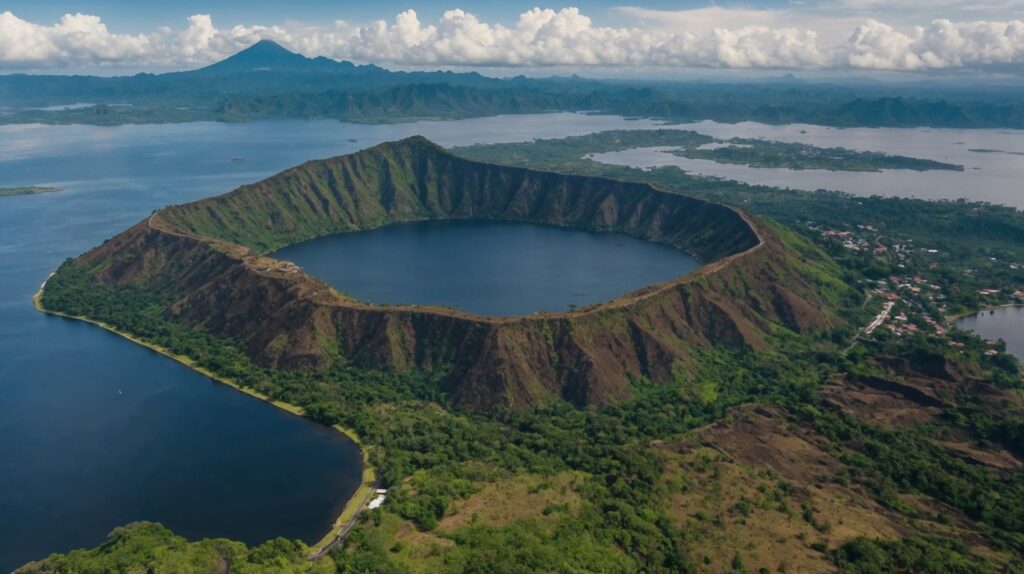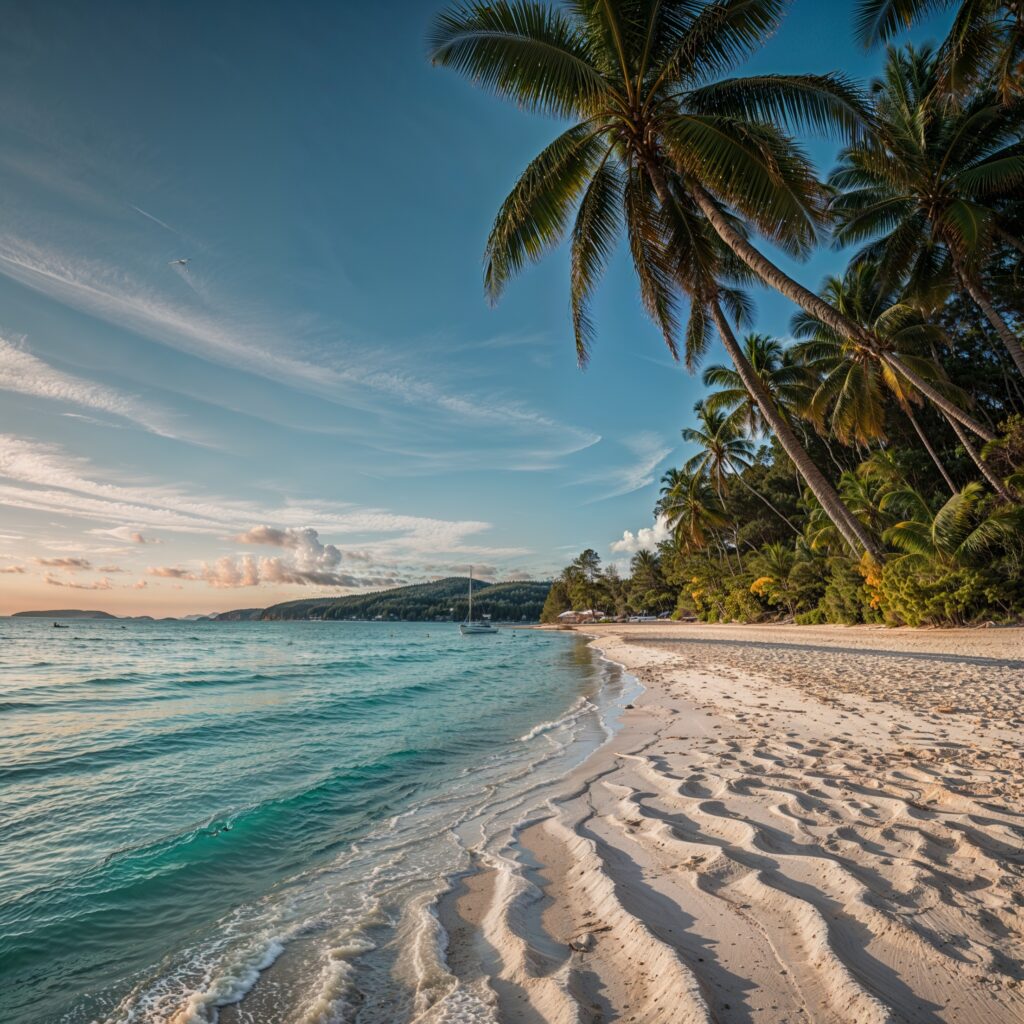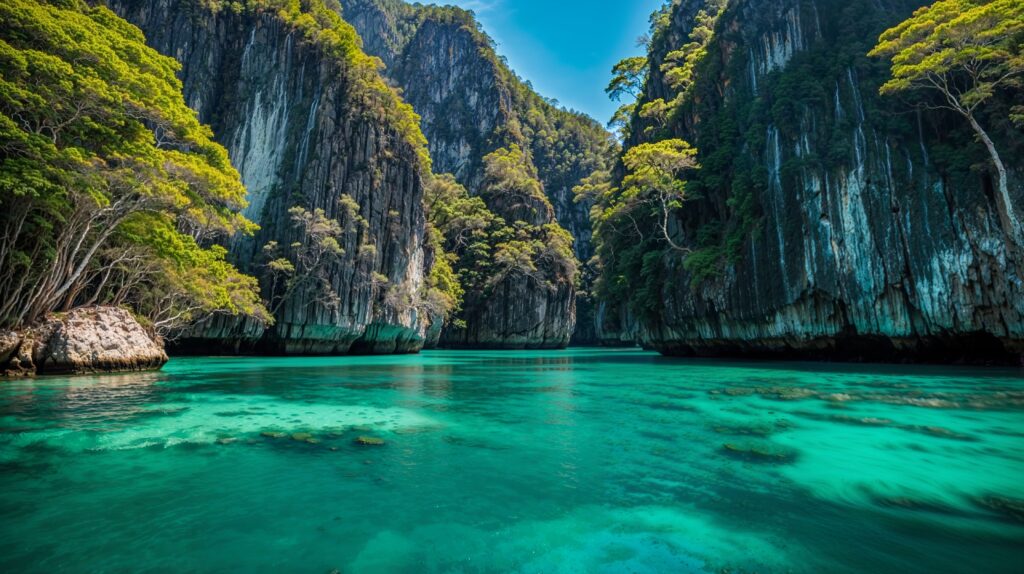Kumusta, mga kababayan! Today, we’re going on an exciting journey to explore one of the Philippines’ most famous natural wonders – Taal Volcano. Imagine a volcano inside a lake, on an island, inside another lake, on an island. Sounds confusing? Don’t worry! We’ll break it down for you in a way that’s easy to understand and fun to read. This blog will take you on a virtual trip back home to one of our country’s most breathtaking sights.
Taal Volcano isn’t just any ordinary mountain. It’s a complex volcano system that has been both a source of wonder and worry for Filipinos for centuries. Located in the province of Batangas, just about 50 kilometers south of Manila, Taal is often called the “Volcano Island.” It sits in the middle of Taal Lake, which is actually a caldera – a large crater formed by a massive eruption long ago. This unique geography makes Taal one of the most picturesque and intriguing volcanoes in the world.
But Taal isn’t just pretty to look at. It’s also one of the most active volcanoes in the Philippines. Don’t let its small size fool you – Taal may be one of the world’s smallest active volcanoes, but it packs a punch! It has erupted several times in history, sometimes with devastating effects. But don’t worry, we’ll get into all that exciting stuff later.
In this blog, we’ll take you on a virtual hike up Taal Volcano. We’ll explore its history, its unique features, and why it’s such an important part of Filipino geography and culture. We’ll also give you some tips on how to visit Taal safely, what to expect when you’re there, and some fun facts that will make you the expert among your friends when talking about this amazing natural wonder.
So, grab a cold glass of buko juice, sit back, and let’s start our adventure into the heart of Taal Volcano!
A Peek into Taal’s Fiery Past
The Birth of a Giant
Taal Volcano’s story begins long before any of us were born. Scientists believe that the Taal volcanic complex started forming about 500,000 to 100,000 years ago. Imagine that – our Taal has been around longer than humans have been writing or building cities! Over thousands of years, eruptions and collapses shaped the landscape we see today.
The main feature we see now, Taal Lake, was once a much larger caldera. A caldera is like a giant bowl-shaped depression formed when a volcano erupts and collapses. Over time, this caldera filled with water, creating the lake we now know as Taal Lake. In the middle of this lake, volcanic activity continued, forming the Volcano Island we see today.
Taal’s Temper Tantrums
Taal Volcano isn’t just old; it’s also very active. Since 1572, it has erupted at least 33 times. That’s a lot of action for a small volcano! Some of these eruptions were small, just puffs of steam and ash. But others were much bigger and more dangerous.
Let’s look at some of Taal’s most memorable eruptions:
| Year | Description |
|---|---|
| 1754 | The biggest recorded eruption. It lasted for almost 7 months! |
| 1911 | A powerful eruption that killed over 1,300 people and changed the shape of the volcano |
| 1965 | An eruption that created a new island in the crater lake |
| 2020 | The most recent big eruption, which caused widespread evacuation |
The 1754 eruption was so big that it changed the shape of Taal Lake and Volcano Island. It also blocked the Pansipit River, which used to connect Taal Lake to Balayan Bay. This changed Taal Lake from saltwater to freshwater over time.
The 1911 eruption was one of the deadliest. It produced hot mud flows, called lahars, and volcanic lightning. Many people living on Volcano Island didn’t have time to escape.
In 1965, a new eruption center, called Mt. Tabaro, formed on Volcano Island. This eruption created a new island in the main crater lake, showing how quickly Taal can change its landscape.
The 2020 eruption reminded us that Taal is still very much alive. It sent ash all the way to Manila, causing flight cancellations and school closures. Over 300,000 people had to leave their homes for safety.
These eruptions show us that Taal, while beautiful, can also be dangerous. That’s why scientists keep a close eye on it all the time.
The Unique Geography of Taal
A Volcano Within a Lake Within a Volcano
Now, let’s talk about what makes Taal Volcano so special. Remember how we said it’s a volcano inside a lake, on an island, inside another lake, on an island? Let’s break that down:
- The outermost island is Luzon, the largest island in the Philippines.
- On Luzon, there’s a large lake called Taal Lake. This lake is actually a caldera, a large volcanic crater.
- In Taal Lake, there’s an island called Volcano Island.
- On Volcano Island, there’s the Main Crater, which sometimes has a lake in it.
- And sometimes, in the Main Crater Lake, there’s a small island called Vulcan Point.
It’s like a set of Russian nesting dolls, but with islands and lakes! This unique setup is why Taal is often called a “complex volcano” by scientists.
The Main Crater: Heart of the Volcano
The Main Crater is where most of the action happens. It’s about 2 kilometers wide and has steep walls. When it’s not erupting, you can often see a beautiful green lake inside the crater. This lake changes color sometimes – it can be blue-green, yellow-green, or even grayish, depending on the volcanic activity below.
Around the Main Crater, you’ll see steam vents called fumaroles. These are like the volcano’s nostrils, constantly releasing steam and gases from underground. It’s a reminder that even when Taal looks calm, there’s a lot happening beneath the surface.
Taal Lake: More Than Just Water
Taal Lake, which surrounds Volcano Island, is special too. It used to be connected to the sea, but after the big 1754 eruption, it got cut off. Over time, the saltwater became freshwater. This change created a unique environment where some saltwater fish adapted to living in freshwater.
One famous example is the tawilis, the only freshwater sardine in the world. It’s found only in Taal Lake and nowhere else on Earth! This shows how Taal’s eruptions don’t just change the land – they can change the whole ecosystem too.
Hiking Taal: A Journey to Remember
Planning Your Adventure
Excited to visit Taal? Great! But before you pack your bags, let’s go through some important things to know:
- Check the Alert Level: PHIVOLCS (Philippine Institute of Volcanology and Seismology) always monitors Taal. They use Alert Levels from 0 to 5. Always check the current Alert Level before planning your trip. If it’s Level 2 or higher, it’s not safe to visit.
- Choose Your Starting Point: Most hikes start from either Talisay or San Nicolas in Batangas. From there, you’ll take a boat ride to Volcano Island.
- Best Time to Visit: The dry season (November to April) is usually the best time. The trails are less muddy, and you’re less likely to get caught in rain.
- What to Bring:
- Comfortable walking shoes
- Hat and sunglasses
- Sunscreen
- Plenty of water
- Light snacks
- Camera (you’ll want to capture the views!)
- Hire a Guide: It’s always safer and more informative to go with a local guide. They know the safest paths and can tell you interesting facts about the volcano.
The Hike Itself
Now, let’s talk about the actual hike. It’s not the longest or most difficult hike you’ll ever do, but it has its challenges:
- Boat Ride: Your adventure starts with a 20-30 minute boat ride across Taal Lake. Enjoy the view of Volcano Island getting bigger as you approach.
- The Trail: Once you land, you have two options – walk or ride a horse. If you choose to walk, the trail is about 1.5 kilometers long and can take 45 minutes to an hour.
- Terrain: The path starts off easy but gets steeper as you go. You’ll walk on volcanic soil and rocks. It can be dusty on dry days or muddy if it has rained.
- Viewpoints: As you climb, you’ll get amazing views of Taal Lake and the surrounding landscape. Don’t forget to take breaks and enjoy the scenery!
- The Summit: The highlight of the hike is reaching the rim of the Main Crater. From here, you can see the crater lake and maybe even the small Vulcan Point island if the water level is low.
Remember, the hike back down is just as important. Take your time, watch your step, and continue to enjoy the views!
Taal’s Impact on Filipino Life and Culture
A Source of Livelihood
Taal Volcano isn’t just a natural wonder; it’s an important part of many Filipinos’ lives. The fertile volcanic soil around Taal is great for farming. Many people grow coffee, pineapples, and other crops in the area.
Taal Lake is also important for fishing. Remember the tawilis we mentioned earlier? It’s a popular food fish and a source of income for local fishermen. Tourism is another big part of the local economy. Many people work as boat operators, tour guides, or run small shops and restaurants for visitors.
Taal in Filipino Culture
Taal has been part of Filipino stories and beliefs for centuries. Some old legends say that Taal is home to spirits or mythical creatures. In modern times, Taal often appears in Filipino movies, TV shows, and even songs, usually as a symbol of natural beauty or power.
The volcano has also shaped local traditions. For example, some communities have special ceremonies or prayers related to the volcano, asking for protection or good harvests.
Environmental Concerns
While Taal brings many benefits, it also presents challenges. The risk of eruptions means that people living near the volcano always need to be prepared to evacuate. There are also concerns about overfishing in Taal Lake and the impact of too many tourists on the environment.
Many organizations are working to protect Taal’s unique ecosystem while also supporting the local communities. It’s a delicate balance between enjoying Taal’s beauty, using its resources, and keeping it safe for future generations.
Safety First: Respecting Taal’s Power
Understanding the Risks
As beautiful as Taal is, we must always remember that it’s an active volcano. This means there are some risks involved in visiting:
- Sudden Eruptions: Taal can sometimes erupt with little warning. That’s why it’s crucial to check the Alert Level before visiting.
- Volcanic Gases: Even when not erupting, Taal releases gases that can be harmful if you breathe too much of them.
- Unstable Ground: Parts of Volcano Island can be unstable due to past eruptions and ongoing volcanic activity.
- Weather Changes: The weather around Taal can change quickly. A sunny day can turn into a rainy, slippery hike in no time.
Staying Safe
Here are some tips to keep you safe while enjoying Taal:
- Follow Official Advice: Always listen to PHIVOLCS and local authorities. If they say it’s not safe to visit, don’t go.
- Stay on Marked Trails: When hiking, stick to the paths your guide shows you. Don’t try to explore on your own.
- Don’t Swim in the Crater Lake: No matter how tempting it looks, the water can be dangerously hot and acidic.
- Be Prepared to Leave: If your guide says it’s time to go, don’t argue. They’re trained to recognize danger signs.
- Respect Nature: Don’t litter, don’t take “souvenirs” from the volcano, and don’t disturb plants or animals.
Remember, respecting Taal’s power is part of appreciating its beauty. By staying safe, we can continue to enjoy this natural wonder for years to come.
Taal Trivia: Fun Facts to Impress Your Friends
Now that we’ve learned so much about Taal, let’s finish with some fun facts that will make you a Taal expert:
- Small but Mighty: Taal is one of the world’s smallest active volcanoes, but it’s also one of the deadliest in the Philippines.
- Island Maker: The 1965 eruption created a new island in just a few days. Volcanoes can change landscapes faster than any other natural process!
- Lightning Show: Taal’s eruptions often create spectacular volcanic lightning. It’s dangerous but incredibly beautiful.
- Volcano Watcher: PHIVOLCS has a volcano observatory right on the shore of Taal Lake. Scientists work there 24/7 to keep an eye on Taal.
- Hollywood Star: Taal has appeared in many international movies and TV shows. Its unique shape makes it a favorite for filmmakers.
- Taal’s “Twins”: There are volcanoes in other countries that look a bit like Taal, like Toba in Indonesia and Crater Lake in the USA.
- Healing Waters?: Some locals believe that the warm springs around Taal have healing properties. While this isn’t scientifically proven, the springs are popular for relaxation.
The Enduring Appeal of Taal
Taal Volcano is more than just a mountain or a tourist spot. It’s a living, breathing part of Filipino geography and culture. From its fiery past to its uncertain future, from its unique ecosystem to its impact on local communities, Taal continues to fascinate and inspire.
For Filipinos working abroad, Taal can be a symbol of home – a reminder of the natural beauty and power of our country. Whether you’re planning to visit on your next balikbayan trip or just enjoying this virtual tour, we hope this blog has given you a new appreciation for one of the Philippines’ most iconic landmarks.
Remember, Taal’s story is still being written. Every eruption, every change in the landscape, adds a new chapter. By understanding and respecting this mighty volcano, we can ensure that future generations of Filipinos will also have the chance to marvel at Taal’s dramatic peaks and peer into the heart of this living giant.
So, the next time you see a picture of Taal or hear it mentioned in the news, you can smile and think, “I know that volcano. It’s not just beautiful – it’s got an amazing story to tell.”
Ingat always, kabayan, and may your own adventures be as exciting as a journey to Taal!
Sources:
- Philippine Institute of Volcanology and Seismology (PHIVOLCS): https://www.phivolcs.dost.gov.ph/
- Global Volcanism Program, Smithsonian Institution: https://volcano.si.edu/volcano.cfm?vn=273070
- Department of Tourism Philippines: https://www.tourism.gov.ph/
Disclaimer: This blog is for informational purposes only. Always check with local authorities and official sources for the most up-to-date information on Taal Volcano’s status and safety guidelines. The author and website are not responsible for any actions taken based on the information provided here. If you notice any inaccuracies, please report them to info@taasnoopilipino.com so we can correct them promptly.




